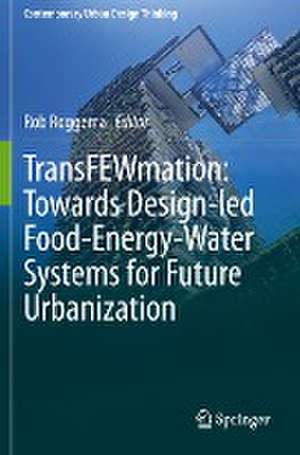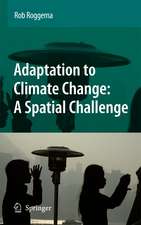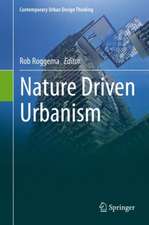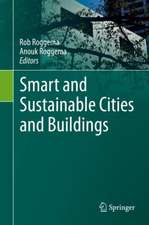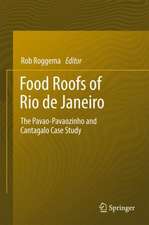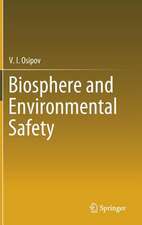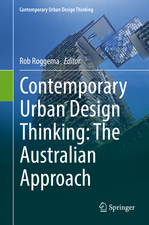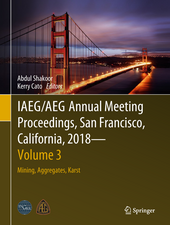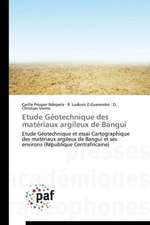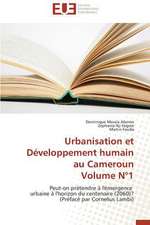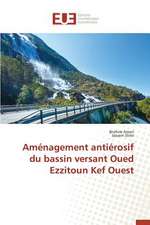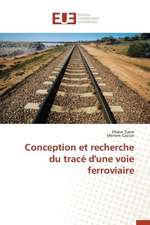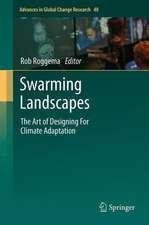TransFEWmation: Towards Design-led Food-Energy-Water Systems for Future Urbanization: Contemporary Urban Design Thinking
Editat de Rob Roggemaen Limba Engleză Paperback – 28 ian 2022
| Toate formatele și edițiile | Preț | Express |
|---|---|---|
| Paperback (1) | 557.88 lei 38-44 zile | |
| Springer International Publishing – 28 ian 2022 | 557.88 lei 38-44 zile | |
| Hardback (1) | 897.65 lei 22-36 zile | |
| Springer International Publishing – 28 ian 2021 | 897.65 lei 22-36 zile |
Preț: 557.88 lei
Preț vechi: 688.74 lei
-19% Nou
Puncte Express: 837
Preț estimativ în valută:
106.75€ • 111.75$ • 88.33£
106.75€ • 111.75$ • 88.33£
Carte tipărită la comandă
Livrare economică 02-08 aprilie
Preluare comenzi: 021 569.72.76
Specificații
ISBN-13: 9783030619794
ISBN-10: 3030619796
Pagini: 342
Ilustrații: XX, 342 p. 185 illus., 131 illus. in color.
Dimensiuni: 155 x 235 mm
Ediția:1st ed. 2021
Editura: Springer International Publishing
Colecția Springer
Seria Contemporary Urban Design Thinking
Locul publicării:Cham, Switzerland
ISBN-10: 3030619796
Pagini: 342
Ilustrații: XX, 342 p. 185 illus., 131 illus. in color.
Dimensiuni: 155 x 235 mm
Ediția:1st ed. 2021
Editura: Springer International Publishing
Colecția Springer
Seria Contemporary Urban Design Thinking
Locul publicării:Cham, Switzerland
Cuprins
Part 1. Framework.- Chapter 1 The Moveable Nexus, Transforming Thinking on Cities.- Chapter 2 A moveable Nexus: framework for food-energy-water design and planning.- Chapter 3 M-NEX methodology: a design-led approach to the FEW-Nexus.- Part II Design for food in M-Nex.- Chapter 4 Nature driven planning for the FEW-Nexus in Western Sydney.- Chapter 5 The flexible scaffold: design praxis in the FEW-nexus.- Chapter 6 Spatialised method for analysing the impact of food.- Chapter 7 Synergetic planning and designing with urban FEW-flows: lessons from Rotterdam Nico Tillie.-Chapter 8 Le Fouture de Groningen; towards transformational food-positive landscapes.- Chapter 9 Mapping the FEW-Nexus across cascading scales: contexts for Detroit from region to city.- Chapter 10 Redesigning the Urban Food Life through the Participatory Living Lab Platform - Practices in Suburban Areas of the Tokyo Metropolitan Region.-Chapter 11 The Regenerative City - positive opportunities of coupling urban energy transition with added values to people and environment.- Chapter 12 Pig farming vs. Solar farming: exploring novel opportunities for the energy transition.- Chapter 13 Proposal for a database of food-energy-water-nexus projects.- Chapter 14 Linking urban food system and environmental sustainability for the resilience of the cities: the case of Tokyo.- Chapter 15 TransFEWmotion: designing urban metabolism as an M-NEX.- Index.
Notă biografică
Prof. Dr. ir. Rob Roggema is Professor Spatial Transformations in the Research Centre for the Built Environment ‘NoorderRuimte’, Hanze University of Applied Sciences in Groningen, the Netherlands. He is Landscape Architect and an international design expert in the field of sustainable urbanism, climate adaptation, energy landscapes and urban agriculture. He held positions at several universities in the Netherlands and Australia, provinces and municipalities, and design firms.
Rob developed the Swarm Planning concept, a dynamic way to design the city, to prepare it for future climate change. Rob’s research focuses on the reciprocal city, investigating resilience, adaptation and circularity in urban design. Recent design concepts Rob has conceived are the Double Defence, a proposition for a second row of barrier islands, protecting the Dutch coast against storm surges; the Floodable Landscape for a region under threat of flooding; Bushfire Resilient Bendigo, in which the design anticipates bushfires through creating a protective shield and slowly moving the town away from the fire; the FoodRoofRio, a roof garden with an aquaponic system growing food for the entire family in ‘Cantagalo’ favela, Rio de Janeiro; and the Sydney Barrier Reef, a refuge for nature fleeing the Great Barrier Reef, which is at risk of disappearing as result of bleeching and simultaneously protects the highly valued real estate of the Sydney coast against future cyclones.Rob has facilitated and designed over 30 design charrettes across the globe in which citizens, academics, governments and industries are indulged in the design process of complex spatial problems. He has written three books about climate adaptation and design, four about urban agriculture and one about design charrettes. Furthermore, he wrote books about the FoodRoofRio and Design after Tsunami in Japan. He is series editor of the book series ‘Contemporary Urban Design Thinking’ and editor in chief of the journal‘Smart and Sustainable Built Environments (SASBE)’.
Rob developed the Swarm Planning concept, a dynamic way to design the city, to prepare it for future climate change. Rob’s research focuses on the reciprocal city, investigating resilience, adaptation and circularity in urban design. Recent design concepts Rob has conceived are the Double Defence, a proposition for a second row of barrier islands, protecting the Dutch coast against storm surges; the Floodable Landscape for a region under threat of flooding; Bushfire Resilient Bendigo, in which the design anticipates bushfires through creating a protective shield and slowly moving the town away from the fire; the FoodRoofRio, a roof garden with an aquaponic system growing food for the entire family in ‘Cantagalo’ favela, Rio de Janeiro; and the Sydney Barrier Reef, a refuge for nature fleeing the Great Barrier Reef, which is at risk of disappearing as result of bleeching and simultaneously protects the highly valued real estate of the Sydney coast against future cyclones.Rob has facilitated and designed over 30 design charrettes across the globe in which citizens, academics, governments and industries are indulged in the design process of complex spatial problems. He has written three books about climate adaptation and design, four about urban agriculture and one about design charrettes. Furthermore, he wrote books about the FoodRoofRio and Design after Tsunami in Japan. He is series editor of the book series ‘Contemporary Urban Design Thinking’ and editor in chief of the journal‘Smart and Sustainable Built Environments (SASBE)’.
Textul de pe ultima copertă
This book discusses a spectrum of approaches to designing the food-energy-water nexus at different spatial-urban scales. The book offers a framework for working on the FEW-nexus in a design-led context and integrates the design of urban neighbourhoods and regions with methodologies how to simultaneously engaging residents and stakeholders and evaluating the propositions in a FEW-print, measuring the environmental impact of the different designs. The examples are derived from on the ground practices in Sydney, Tokyo, Detroit, Amsterdam and Belfast.
Caracteristici
Provides a sustainable city design for the FEW-nexus Insights into the application of food-energy-water nexus in urban design In-depth case studies and practical examples from five cities in four continents Linking design, engagement and assessment of design for sustainable resources
